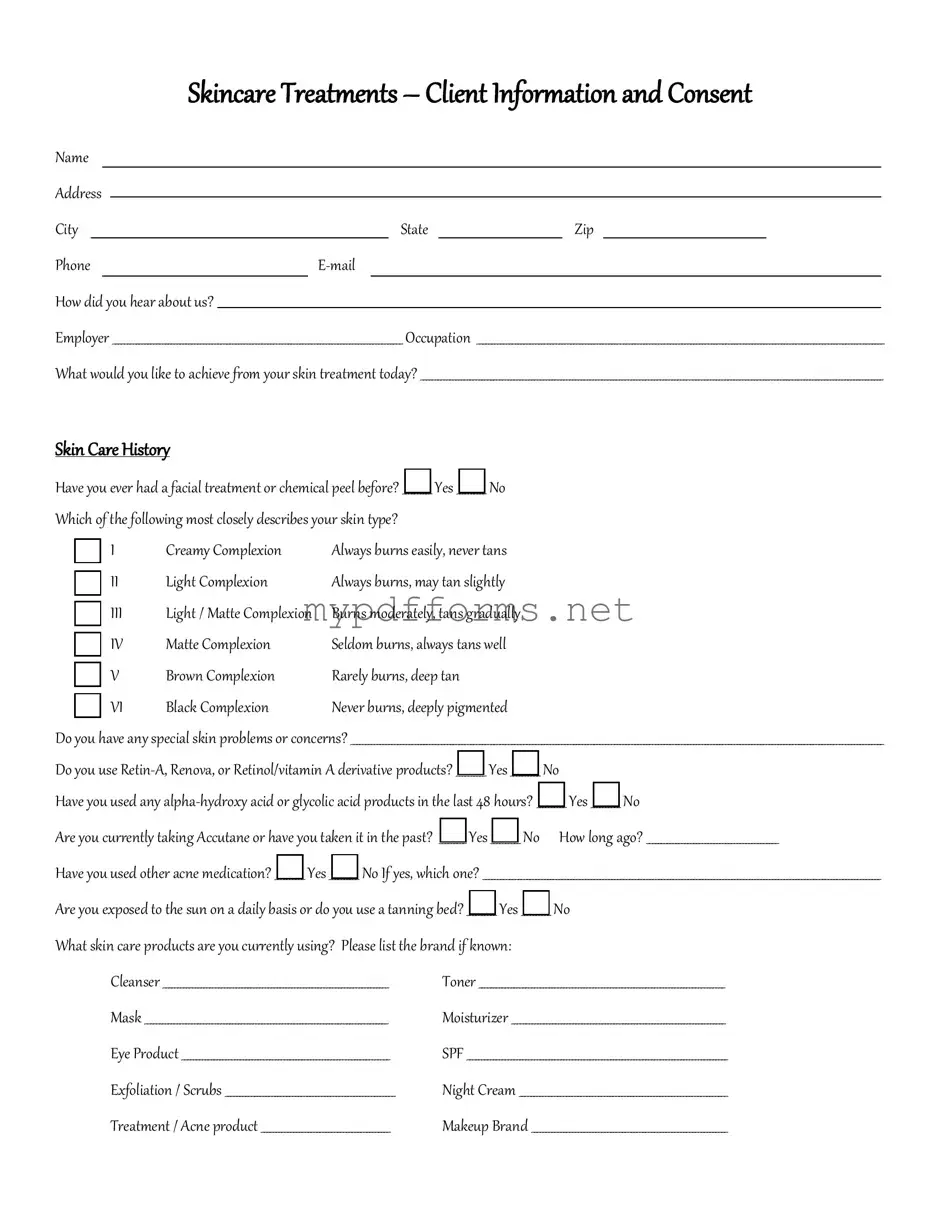The Facial Consent form shares similarities with the Medical Consent form. Both documents require individuals to provide informed consent before undergoing a procedure. They outline the risks, benefits, and alternatives associated with the treatment. In both cases, the signer acknowledges their understanding and agrees to proceed, ensuring that the healthcare provider has the necessary permission to perform the procedure.
Another document comparable to the Facial Consent form is the Treatment Authorization form. This form serves a similar purpose, allowing patients to authorize specific treatments or procedures. It details the scope of the treatment and may include information about potential side effects. Like the Facial Consent form, it emphasizes the importance of patient understanding and consent prior to any medical intervention.
The Release of Liability form also bears resemblance to the Facial Consent form. Both documents aim to protect the provider from legal claims arising from the procedure. The Release of Liability form typically outlines the risks involved and requires the signer to acknowledge these risks. By signing, individuals agree not to hold the provider responsible for any adverse outcomes, similar to the consent provided in the Facial Consent form.
The Waiver of Rights form is another document that aligns with the principles found in the Facial Consent form. This form often requires individuals to relinquish certain rights in exchange for participation in a procedure or event. It emphasizes the understanding of risks and the voluntary nature of the decision. Both forms aim to ensure that individuals are aware of what they are agreeing to and the potential consequences of their choices.
The Patient Information form is also similar, as it collects essential details about the patient before a procedure. This document typically includes medical history, allergies, and current medications. While it does not serve as a consent form, it complements the Facial Consent form by ensuring that the provider has all necessary information to make informed decisions regarding the patient's care.
The Photography Consent form is another relevant document. This form is often used in cosmetic procedures, allowing practitioners to take before-and-after photos of patients. Similar to the Facial Consent form, it requires the patient’s consent, ensuring that they understand how their images will be used. Both documents emphasize informed consent and the importance of patient autonomy.
The Acknowledgment of Risks form is closely related as well. This document requires patients to acknowledge that they have been informed about the risks associated with a procedure. It serves to protect the provider by ensuring that patients understand potential complications. The focus on risk acknowledgment aligns with the purpose of the Facial Consent form, which also addresses risks involved in facial treatments.
If you're looking to prepare your end-of-life preferences, consider the utility of a Do Not Resuscitate Order within your healthcare planning. This form can be essential in making clear your wishes regarding life-sustaining treatments. For further information, visit how a Do Not Resuscitate Order can influence your medical care.
The Informed Consent for Anesthesia form is another document that parallels the Facial Consent form. This form specifically addresses the use of anesthesia during procedures. It outlines the risks and benefits of anesthesia, similar to how the Facial Consent form discusses the specifics of facial treatments. Both forms ensure that patients are fully informed before agreeing to proceed.
Lastly, the Emergency Contact form is relevant in this context. While it does not directly pertain to consent, it provides crucial information in case of an emergency during a procedure. This form complements the Facial Consent form by ensuring that healthcare providers have access to important contact information, thereby enhancing patient safety and care during treatments.
